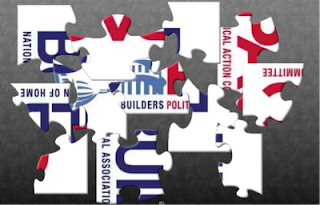Customer Expectations: Pride Cometh Before a Fall
Whether you’re selling a product or providing a service, one of the first steps in any business relationship is setting expectations. How you set those expectations can make or break your business relationship.
“We can get you the same number of conversions on half the spend.”
The reason I learned this was because the client preferred my company, but they wanted to get that half of their spend back. And here is where pride enters the scene.
Usually, I do not make such bold statements. Perhaps it is my naturally conservative nature or a desire to overdeliver, but I would not have made this type of claim myself. However, I looked at past performance and saw how the other agency had arrived at their claim (there was a lot of spend and a lot of keywords that were not performing). I took the deal without adjusting this expectation.
The client beat me over the head with the expectation over and over. I told them everything I was doing to remedy the problem. I spent hours trying to fix the problem. In the end, I was buried in the grave of unfulfilled expectations.
Expectations are the same way. They may seem like they’re only a small part of the process, but they are powerful predictors of the relationship’s future. Expectations are at the foundation of the relationship. They’re the measuring stick.
My Sad Story
A while back I was approached by a client that was looking to improve their online marketing. They had been doing a lot of PPC advertising and weren’t getting the results they wanted. Therefore, they had been getting quotes from numerous Internet marketing agencies for PPC with SEO and social media bundled together. During the process I was told that another agency made the following claim:“We can get you the same number of conversions on half the spend.”
The reason I learned this was because the client preferred my company, but they wanted to get that half of their spend back. And here is where pride enters the scene.
The Deadliest Sin
In most accounts of the seven deadly sins, pride is the original sin and the most deadly.Usually, I do not make such bold statements. Perhaps it is my naturally conservative nature or a desire to overdeliver, but I would not have made this type of claim myself. However, I looked at past performance and saw how the other agency had arrived at their claim (there was a lot of spend and a lot of keywords that were not performing). I took the deal without adjusting this expectation.
What Happened?
As you might have guessed from the blog title, I wasn’t able to deliver on the expectation. I did what a good PPC manager should do and plucked out all the best-performing keywords and put them in a shiny new campaign. I used the best ad copy as a baseline and tested new ad copy against it. In theory, it should have worked, but it didn’t.The client beat me over the head with the expectation over and over. I told them everything I was doing to remedy the problem. I spent hours trying to fix the problem. In the end, I was buried in the grave of unfulfilled expectations.
Setting Proper Expectations
A famous research study by Walter Mischel, a professor of psychology at Stanford, showed that a simple test of delayed gratification was a better predictor of future academic performance than IQ tests. The test? A child was given one marshmallow and told that if he or she could wait until the researcher returned (15 minutes), he or she could have two marshmallows. If they ate the first marshmallow or rang a bell to bring the researcher back early, no second marshmallow.Expectations are the same way. They may seem like they’re only a small part of the process, but they are powerful predictors of the relationship’s future. Expectations are at the foundation of the relationship. They’re the measuring stick.
What Did I Learn?
Here are a few takeaways I can offer you:- Know Yourself and Stick to What You Know – If you’re uncomfortable with the initial expectation you’re probably going to be uncomfortable trying to meet it. Save yourself a lot of pain by not letting pride get into the mix.
- Proper Expectations Make Happy Clients/Customers - When people get what they expect, they’re satisfied. If you exceed expectations, they’re ecstatic. Those are the clients that recommend you.
- Own Up to Your Mistakes – If you’ve set expectations too high, reset them as soon as possible. The further along you get, the more trust is lost and the more hard feelings develop. It may cost you the sale, but you have to pay the piper eventually.
























